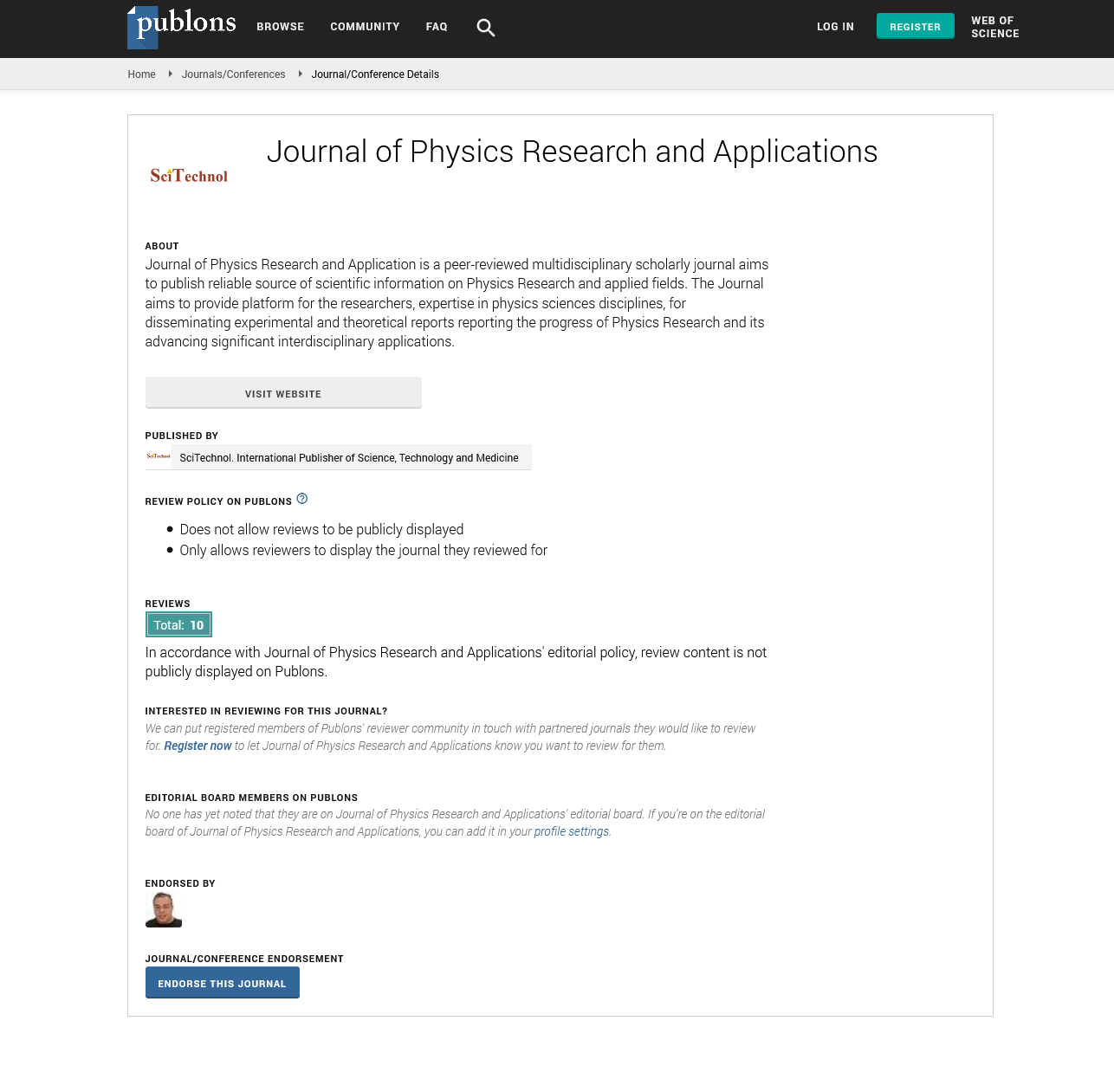Solvability of a moving contact line problem described using the interface formation model
Yoshiaki Kusaka
Tamagawa University, Japan
: J Phys Res Appl
Abstract
It is well known that if the classical no slip condition is applied in moving contact line problems, such as dynamic wetting, a non-integrable singularity arises. One way to avoid the situation is to give particular contact angles for which the no slip condition is consistent with the free boundary conditions. Another way is to replace the no slip condition with those allowing for slipping near the contact line. These modified models may remove the foregoing singularity; however, the following issues remain unsolved. The contact angle depends not only on the contact line speed but also on the whole velocity field near the contact line. Rolling motion arises near the contact line in the real flow. (If slip conditions are applied, a sliding motion instead of a rolling motion is allowed). In 1993, Shikhmurzaev introduced a new model referred to as the “interface formation model'' to overcome these shortcomings. In this theory, the interface is modeled as the “interfacial layer”, which is a thin layer with mass between different phases. By introducing the interfacial layer, this model can describe the process of interface formation/disappearance occurring at the contact line, and the fore-mentioned issues are resolved not in an ad hoc manner. In this presentation, we consider a problem with a moving contact line described using the interface formation model. More precisely, we investigate the problem of a steady-rising meniscus in a circular capillary tube in a gravitational field, and prove the existence of an axially symmetric solution in weighted Holder spaces for small rising speeds of the meniscus
Biography
Yoshiaki Kusaka was received his PhD from Keio University in 2002. He is currently a Professor of Faculty of Engineering of Tamagawa University. His main interest is in mathematical analysis of hydrodynamic free boundary problems with phase transition. He is currently working on mathematical analysis of dynamic wetting, cusp formation, coalescence/ breakup of liquid drops.
E-mail: kusaka@eng.tamagawa.ac.jp
 Spanish
Spanish  Chinese
Chinese  Russian
Russian  German
German  French
French  Japanese
Japanese  Portuguese
Portuguese  Hindi
Hindi 
